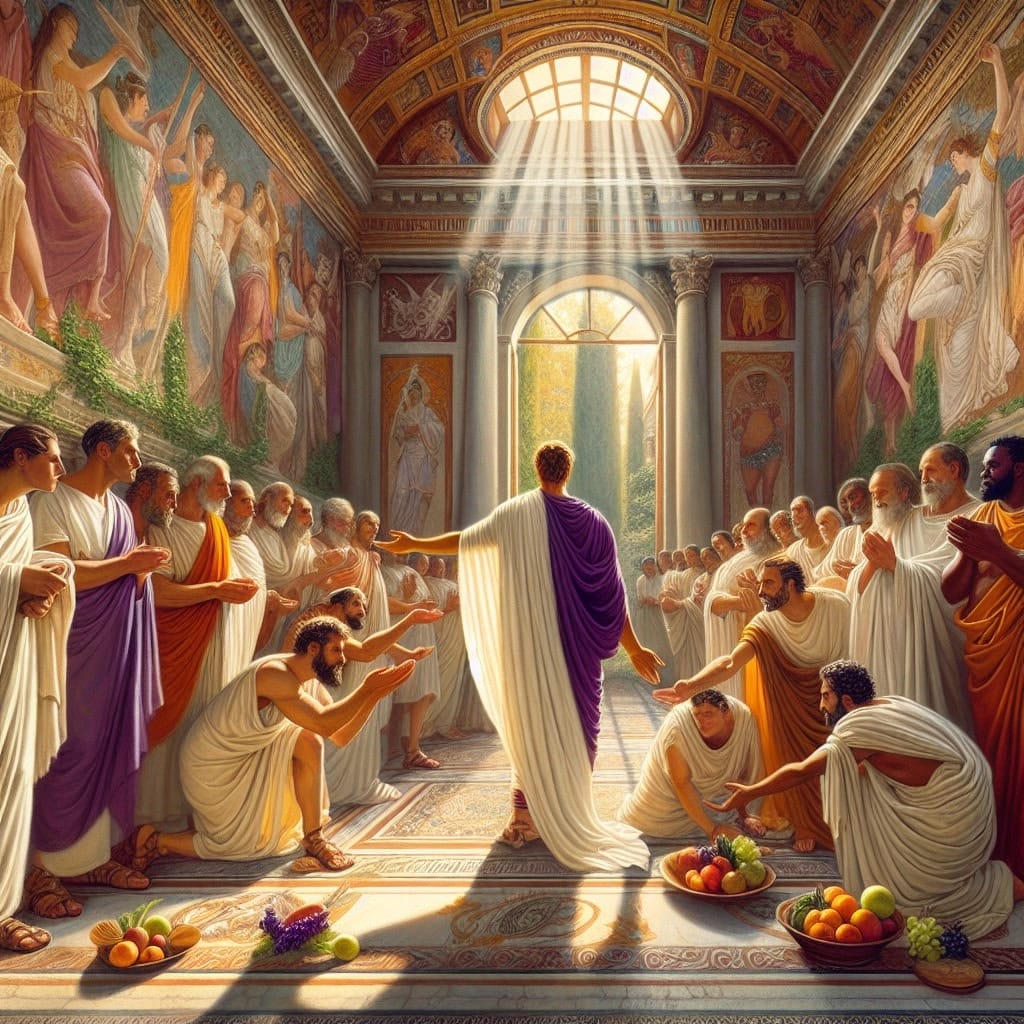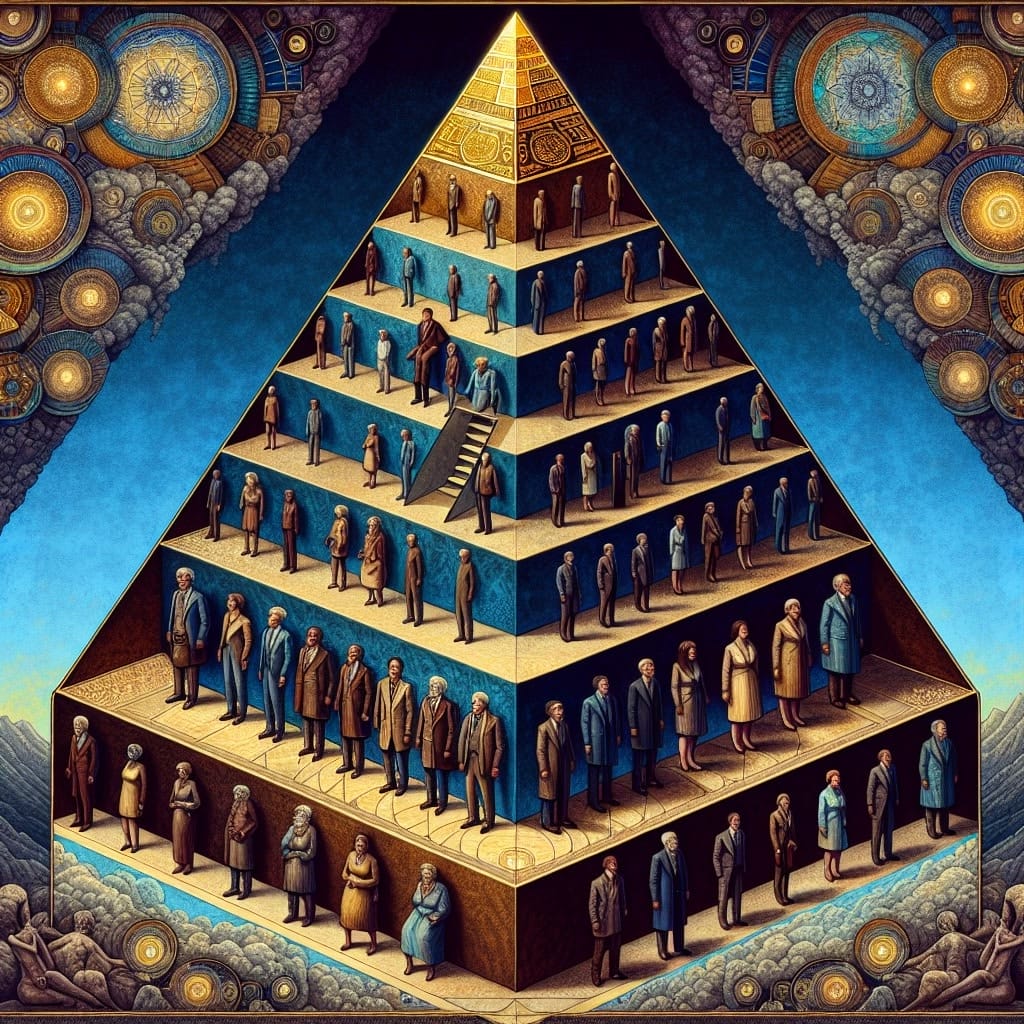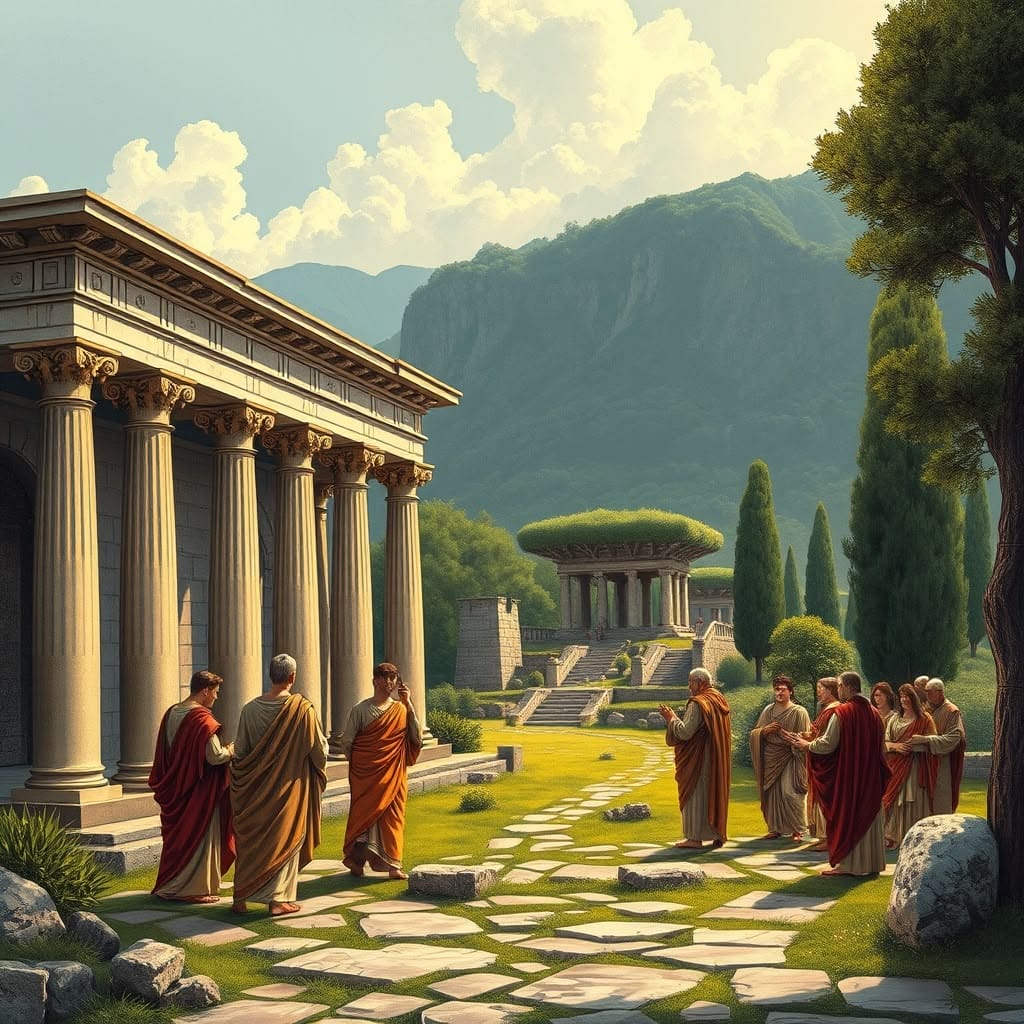The patronage system in ancient Rome was a cornerstone of societal structure, shaping interactions and hierarchies. This system was defined by a mutually beneficial relationship between wealthy patricians, known as patrons, and their plebeian clients. Patrons provided essential support, including financial aid and legal protection, to their clients. In return, clients offered loyalty and services, enhancing their patron’s prestige.
As a fundamental social mechanism, the patronage system reinforced class distinctions and maintained social order. It was instrumental in organizing Roman society, influencing political alliances and personal relationships. The impact of this system extended beyond Rome, leaving a lasting legacy on governance and societal structures throughout history.
Roles of Patrons and Clients
In ancient Rome, the patronage system was essential in defining societal roles. Patrons were typically wealthy patricians who provided support, protection, and resources to their clients, often plebeians or liberti. This relationship was governed by formal rules and expectations.

Patrons offered financial assistance, legal advice, and protection, while clients reciprocated with loyalty and services, enhancing their patron’s prestige. Daily interactions such as the salutatio, where clients greeted patrons, reinforced these bonds. Clients were also expected to support their patrons in political and personal matters, often through votes or public endorsements.
This mutually beneficial arrangement not only strengthened the social hierarchy but also facilitated upward mobility for ambitious clients. Through their patrons’ influence, clients could gain opportunities for advancement, illustrating the system’s dynamic role in Roman society.
The Salutatio Ritual
In ancient Rome, the salutatio was a daily morning ritual that underscored the hierarchical nature of Roman society. Clients would visit their patrons each morning, offering formal greetings as a sign of respect and acknowledgment of the patrons’ higher social status. Patrons, however, did not reciprocate these greetings, reinforcing the existing power dynamics.

This ritual was not merely an exchange of pleasantries; it was a strategic social interaction that reinforced mutual benefits within the patron-client relationship. Patrons gained prestige through the number of clients who paid them homage, while clients received protection, legal counsel, and financial support in return. Through these interactions, the salutatio played a pivotal role in maintaining societal structures and facilitated the transmission of social esteem in the Roman Republic and Empire.
Financial Support and Protection
In the intricate web of Roman patronage, wealthy patrons provided indispensable support to their clients, particularly those from the plebeian class. This support often took the form of financial aid, such as providing food or monetary assistance, which was critical for clients struggling to sustain themselves. These acts of generosity were not merely acts of goodwill but strategic investments in the loyalty of their clientele.

Beyond financial assistance, patrons offered significant legal protection. They provided legal advice and representation, guiding their clients through complex legal disputes. This assistance was vital in an era where legal knowledge was limited to a privileged few. Thus, patrons ensured their clients’ welfare, reinforcing their own social standing and political influence within Roman society.
Reinforcement of Social Hierarchies
The patronage system in Roman society played a pivotal role in maintaining social order and perpetuating class distinctions. This system entrenched the hierarchical structure by establishing clear relationships between patrons, often from the upper echelons such as the Senatorial and Equestrian Classes, and their clients, who were of lower status. Through these relationships, patrons provided economic, political, and legal opportunities, which were crucial for the clients’ survival and advancement.

This dynamic not only reinforced the existing social divide but also ensured the continuation of the status quo. The absence of a middle class further solidified the gap between the wealthy elite and the majority lower classes. Historically, such systems were believed to bring social stability, as they created a network of obligations and loyalty that sustained the rigid class distinctions inherent in Roman society.
Opportunities for Upward Mobility
The patronage system in ancient Rome provided a vital platform for ambitious plebeians to ascend the social hierarchy. Notable figures such as Gaius Gracchus and Tiberius Gracchus exemplify how plebeians could leverage their connections with powerful patrons to achieve political influence and advocate for social reforms.

By aligning with influential patrons, plebeians accessed opportunities in military service, political office, and entrepreneurship. These relationships facilitated the opening of doors that might otherwise remain closed. The patronage system created a structured pathway for career advancement, as patrons provided the necessary support and mentorship to navigate the competitive landscape of Roman society.
Ultimately, this dynamic system enabled some plebeians to break through the barriers of their social class, illustrating the enduring importance of networks and relationships in achieving upward mobility.
Historical Context and Evolution
The patronage system has its roots in the early days of the Roman Republic. It evolved from simple personal alliances into a complex social structure integral to Roman society. Initially, patrons offered protection and resources to clients in exchange for loyalty and support, forming the basis of many social and political relationships.

As Roman society developed, patronage became a pivotal mechanism for political maneuvering and cultural cohesion. Wealthy patrons wielded significant influence, not only supporting clients in their career pursuits but also shaping public policy and cultural norms. This system reinforced the social hierarchy but also provided avenues for ambitious individuals to rise through the ranks, thereby impacting both the political landscape and cultural fabric of Rome.
Challenges and Criticisms
The Roman patronage system faced several criticisms, primarily due to the stark inequality of power it perpetuated. Patrons wielded substantial influence, often restricting the autonomy of their clients. This dynamic fostered an environment ripe for corruption and nepotism, where opportunities were allocated based on personal connections rather than merit.

The system’s potential for exploitation further complicates its legacy. Patrons could demand unwavering loyalty or services, exploiting their clients’ dependency. Such relationships often reinforced social hierarchies, making upward mobility challenging for many plebeians. These dynamics extended beyond personal interactions, influencing societal norms around loyalty and service in Roman culture.
Lasting Impacts on Society
The Roman patronage system has left an indelible mark, influencing modern patronage systems observed today. Contemporary parallels can be seen in political, business, and cultural arenas where influential figures extend protection and resources in exchange for loyalty and services. This echoes the Roman structure of mutual benefit but also raises concerns about inequality of power and potential exploitation.

Beyond these parallels, the system’s enduring legacy is evident in the stratification of social structures. The Roman model reinforced hierarchical norms, making social mobility contingent upon alliances with powerful benefactors. This legacy persists, as modern societies continue to grapple with social stratification and dependency dynamics. Thus, while the patronage system has evolved, its foundational principles and challenges remain relevant in shaping societal norms.
Data and Statistics
Quantitative analysis of the Roman patronage system reveals its profound impact on Roman society. Historical records indicate that a significant portion of the population engaged in patron-client relationships, reflecting the system’s widespread influence. It is estimated that approximately 20% of Roman citizens were directly involved in these relationships, highlighting the societal dependence on this social structure.
Moreover, statistical evidence underscores the patronage system’s role in maintaining social hierarchies. Data suggest that patrons, often from patrician or equestrian classes, controlled over 80% of political offices, underscoring their dominance in public life. This concentration of power further exacerbated the inequality of power and limited opportunities for clients to advance.
These statistics elucidate the systemic entrenchment of patronage, illustrating how deeply it was woven into the fabric of Roman society and its enduring legacy in shaping social dynamics.
Table: Key Aspects of Patronage
The Roman patronage system was pivotal in shaping societal structures. This table offers a concise visual representation of its elements, showcasing the roles, rituals, and impacts within Roman society.
| Element | Roles | Rituals | Impacts |
|---|---|---|---|
| Patrons | Provide support and protection | Receive loyalty and services | Reinforce social hierarchies |
| Clients | Offer loyalty and services | Engage in daily salutatio | Gain limited upward mobility |
| Salutatio | Solidify relationships | Daily morning ritual | Maintain societal order |
Pull Quote
“The patronage system in ancient Rome was both a ladder and a cage, offering paths to advancement while binding individuals within rigid social hierarchies.”
This quote encapsulates the dual nature of the patronage system. While it provided opportunities for social mobility, it simultaneously entrenched social stratification. Patrons wielded significant power, creating dependency and limiting autonomy for their clients. This dynamic, though offering some a chance to climb the social ladder, often perpetuated inequality and exploitation, reflecting the complexities of Roman societal structures.
Conclusion
The Roman patronage system served as a cornerstone of societal structure, dictating the dynamics between patrons and clients. Patrons offered financial support and protection, while clients provided loyalty and services, a relationship underscored by rituals such as salutatio. Despite its role in fostering social order and offering some upward mobility, the system was fraught with inequalities and potential for exploitation. Ultimately, while the patronage system reinforced social hierarchies, it also provided a complex framework for navigating Roman society, leaving a lasting impact on historical and modern patronage models.
FAQ Section
- What was the patronage system in ancient Rome? The patronage system was a social structure where patrons provided financial support and protection to clients in exchange for loyalty and services.
- How did the system reinforce social hierarchies? The system entrenched class distinctions by making it difficult for lower-status individuals to rise without a patron, thus perpetuating social stratification.
- What were the potential downsides of the patronage system? It could lead to inequality of power, corruption, dependency, and exploitation, as patrons held significant control over their clients.
- Did the patronage system offer any benefits? Yes, it provided some opportunities for upward mobility for clients who could secure the favor and backing of influential patrons.

